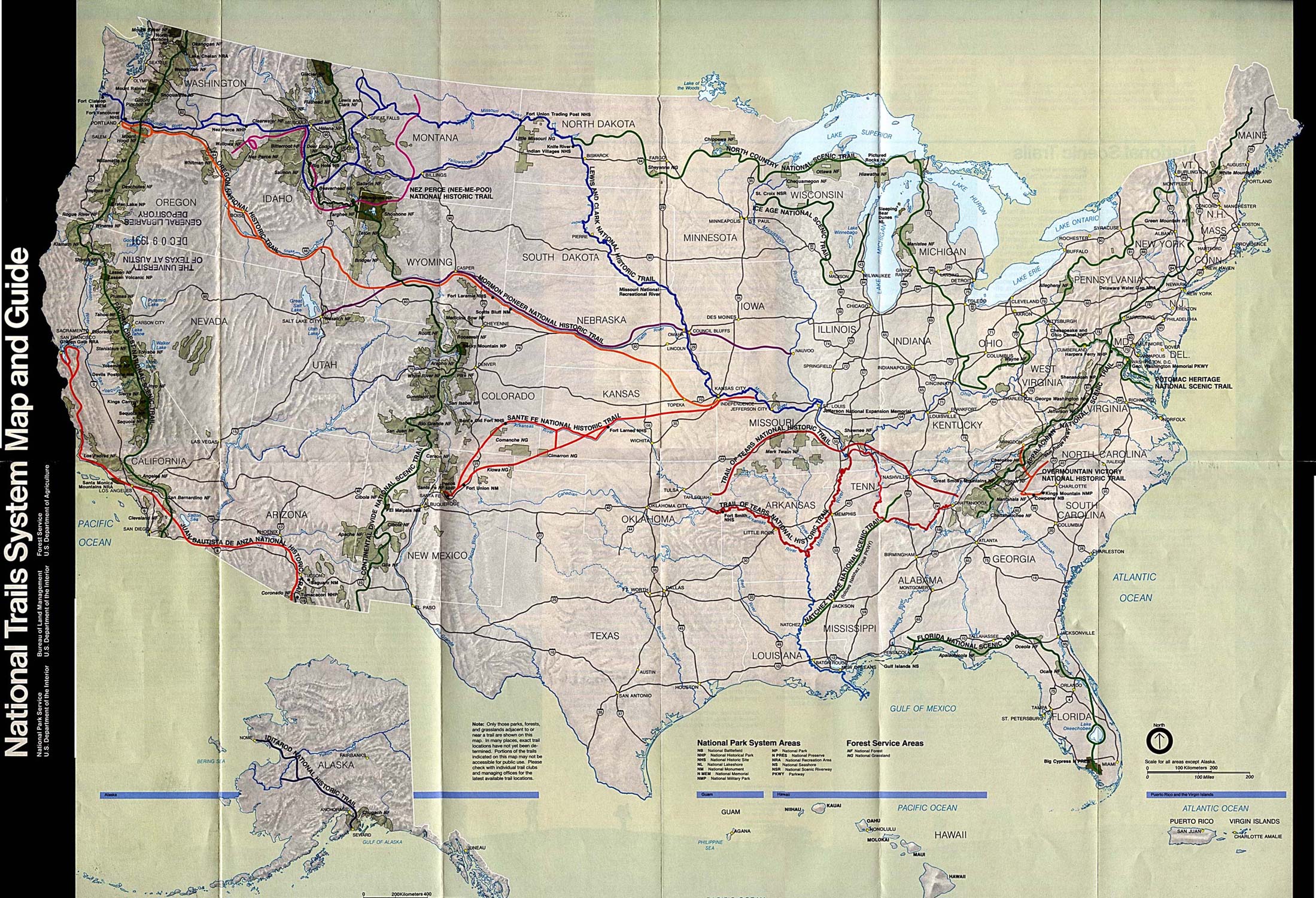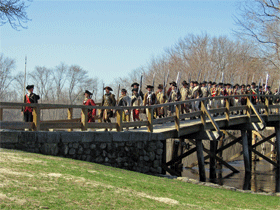Start the Beagle
This week, I start my road trip. From now to the end of
June, I am driving to history at those places where historic events actually
happened. I will visit places of both cultural significance and natural beauty
and continue to write about the parks and my travels. The people and places I
encounter along the way will drive the stories that will fill this blog.
 |
| Map of NPS Historic Trails in the United States |
Here is a revised itinerary of the west coast trip with the reasons that these parks are chosen:
5/11 Leave Las Cruces on el Camino Real de Tierra Adentro and Santa Fe Trail NHT.
Trails of commerce and conquest during Spanish colonial and U.S. territorial times.
5/12 Bent's Old Fort NHS and Sand Creek Massacre NHS, Colorado. A Santa Fe Trail
trading post and the site of a massacre of Cheyenne and Arapaho by U.S. soldiers.
5/13 Ft. Larned NHS, Kansas. Another U.S. Army post along the Santa Fe Trail.
5/14 Driving to history along the Cimarron Cut-off of the Santa Fe Trail
5/15 Return to Las Cruces
5/11 Leave Las Cruces on el Camino Real de Tierra Adentro and Santa Fe Trail NHT.
Trails of commerce and conquest during Spanish colonial and U.S. territorial times.
5/12 Bent's Old Fort NHS and Sand Creek Massacre NHS, Colorado. A Santa Fe Trail
trading post and the site of a massacre of Cheyenne and Arapaho by U.S. soldiers.
5/13 Ft. Larned NHS, Kansas. Another U.S. Army post along the Santa Fe Trail.
5/14 Driving to history along the Cimarron Cut-off of the Santa Fe Trail
5/15 Return to Las Cruces
5/26 Leave Las Cruces
5/27 Moab, Utah and Arches NP
5/28
nation here in 1869.
5/29 Gray's Lake National Wildlife Reserve, Idaho. The summer nesting place for the
sandhill cranes who winter near Las Cruces at the Bosque de Apache NWR.
sandhill cranes who winter near Las Cruces at the Bosque de Apache NWR.
5/30
5/31 Driving to history
6/1 Nez Perce NHP, Idaho. The Nez Perce tried to escape a forced relocation to a
reservation on a heroic 1,200 mile march.
6/2 Hanford (of the Manhattan Project NHP), Washington. Plutonium for the atomic
bomb was made here.
6/3 Driving to history
reservation on a heroic 1,200 mile march.
6/2 Hanford (of the Manhattan Project NHP), Washington. Plutonium for the atomic
bomb was made here.
6/3 Driving to history
6/4-7 Klondike Gold Rush NHP, and Mt. Rainier NP, Washington.
6/8 Lewis and Clark State Park, Washington and Ft. Clatsop NM, Oregon. Lewis and
Clark’s Corps of Discovery wintered here in 1805-06.
6/9 Driving to history
6/10 Redwoods NP, California. Stands of majestic trees are preserved along the Pacific
coast.
6/11 Driving to history.
6/10 Redwoods NP, California. Stands of majestic trees are preserved along the Pacific
coast.
6/11 Driving to history.
6/12-16 Golden Gate National Recreation Area (NRA), Rosie the Riveter/World
War II Home Front NHP, Muir Woods, California. The Golden Gate NRA combines
the natural beauty of the Bay Area with the strategic port defended by forts and
armaments. Rosie the Riveter celebrates the women on the Home Front that helped win World War II. Muir Woods is named after the Sage of wilderness.
6/17 Sutter’s Mill, California. Gold, I tell ya, Gold!
6/18-20 Yosemite NP, California. Hello—It’s Yosemite!
6/21-22 Sequoia NP, California. Some of the tallest trees in the country.
6/23 Manzanar NHS, California. Another Japanese American internment camp during
World War II
6/24 Driving to History
6/25-26 Grand Canyon NP, Arizona. It’s deep.
6/27 Driving to History
6/28 Casa Grande NM, Arizona. One of the first NM units to protect a pre-contact
Native American ruin. Return to Las Cruces, New Mexico.
The Creation of National Parks, National Monuments, and the NPS
To explain the different units in the NPS will take some
time, so get comfy. In 1872, Congress created a federal, a National Park at
Yellowstone out of the Territories of Montana and Wyoming. Yellowstone set the
stage for the today’s Parks that awe us, nurture us, revive us, inspire us, and
instruct us about our country. In the twenty years after 1872, Congress approved
five more National Parks (NP). These are jewels of the natural world with jagged
mountains, majestic trees, and towering granite domes.
In 1906, Congress passed the Antiquities Act which gave the
president the power to administratively designate and protect public lands as a
National Monument (NM). It allowed presidents “to proclaim and reserve historic
landmarks, historic and prehistoric structures, and other objects of historic
or scientific interest.”[1] Originally,
NMs focused on pre-contact Native American sites.
| Map of National Monuments in the U.S. and who manages them |
In August 1916, Congress passed and President Wilson signed
the National Park Service Act which we celebrate this centenary year. The NPS
has dramatically changed over the years. What do those acronyms like NHS, NHP,
NB, NBP, NST, and PWKY mean? There is little difference between National
Historic Sites (NHS) and National Historical Places (NHP). NHS are often
smaller than NHP, but not always. National Battlefields (NB), National
Battlefield Parks (NBP), and National Military Parks (NMP) honor the sites of
combat within our country’s boundaries and on some of the U.S. overseas protectorates.
Parkways (PWKY) and National Historic Trails (NHT) mark the historic as well as
the scenic transportation networks that spread colonization, conquest, and
commerce across the continent. When some people say National Parks, they mean
all 410 units of the NPS. Others mean just the special fifty-nine NPs so
designated.To find your park, visit: https://www.nps.gov/findapark/index.htm.
To confuse matters even more, in 1933 a massive
consolidation and reorganization occurred under President Franklin Roosevelt.
The parks, memorials, battlefields, and monuments previously owned and operated
by the War Department, the National Memorials, the National Capital Parks, and
the Agriculture Department’s National Monuments joined the NPS system. For more information about the various designations for NPS units, go to: https://www.nps.gov/goga/planyourvisit/designations.htm
Basically, the NPS has two general types of parks—those that
are natural beauties and wonders and those that are culturally or historically
significant to our past. National Parks, National Seashores, Scenic Rivers,
Wild Rivers, and others preserve nature. National Monuments, National
Historical Parks, National Historic Sites, and such units oversee our heritage.
For a historian who loves nature, driving to the parks this centenary year
brings joy to my heart.
Creating parks, funding parks, presenting parks to the
public has often been embroiled in politics and profit. Those who want to
utilize the resources of the parks, the lumber, the oil, the grazing rights,
and the minerals don’t want anything to obstruct their access. Those who want
to preserve the natural and cultural resources for future generations have to
fight to create these special units and continue to fight for protection even
after they are made.
On the Road Again
The future Driven by History posts will change. Up to now,
the park histories came from research and writing that sometimes took several
months. Now I will research and write on the fly and on the drive. Granted, I
will be freshly immersed in the places, but still, the blogs will be different.
They will be more placed based, and posts will come as I visit them, not in a chronological
narrative. In truth, I have no idea what the road writings will turn into. Like
life, it’s a work in progress with everyday routines sparked by surprises.
After the west coast trip, I will embark on a longer eastern
and southern trip over the fall, visiting more parks, meeting more Americans,
and writing. The NPS motto this year is Find Your Park. For me, it is Show Me Your
Park. Let me know what your favorite park is. You can reach me at jon.hunner6@gmail.com.
This is trip is made possible by another great American idea
(besides the Declaration of Independence and the National Parks)—public
education. Thanks to the History Department at New Mexico State University,
especially Dwight, Peter, Mark, Bill, and our chair William Storm. Dwight Pitcaithley
as a past chief historian of the NPS has guided my trip in many ways. Thanks to
the history students who have helped in this, especially my research assistant
Brianna Barcena. Many thanks go to Nancy and Peter, owners of the HMS Beagle, for its use over the Santa Fe Trail. Thanks to Kim, Jim, Beth, John, Cécile, Douglas, Peter W., Stuart, Sabette, and many
others who have listened patiently to my zany ideas and helped with this
project. Finally, thanks to the people of New Mexico who employ me and who enable
me to be driven by history.
[1] Barry Mackintosh, The National Parks: Shaping the System (Harpers Ferry: Harpers Ferry Center, 1991), 15.




















